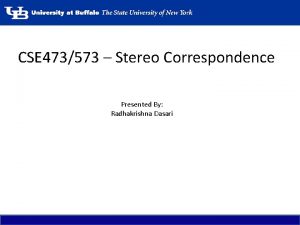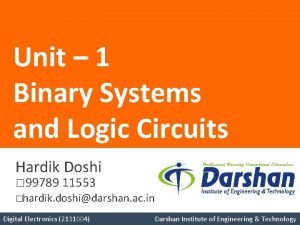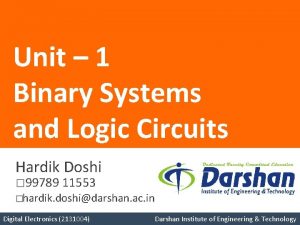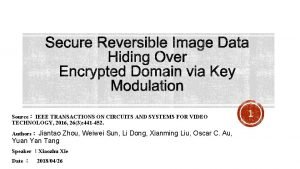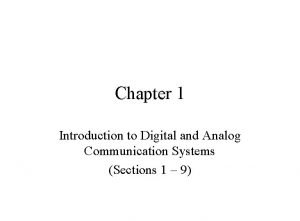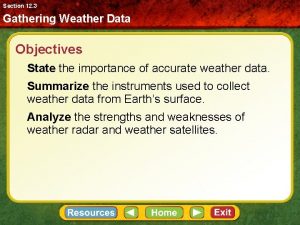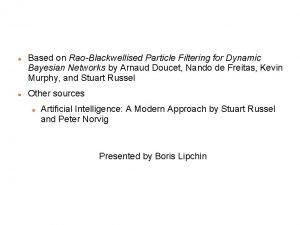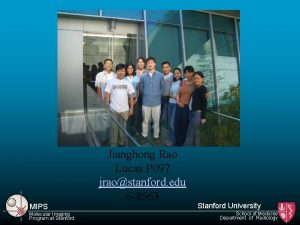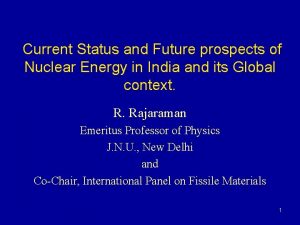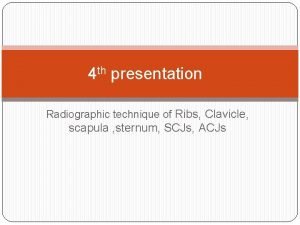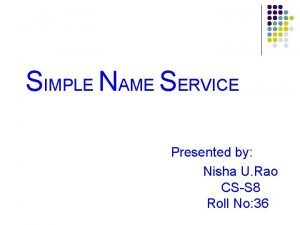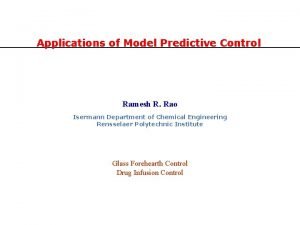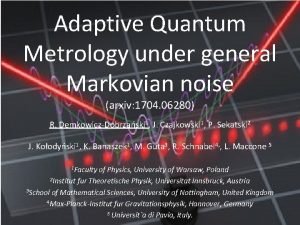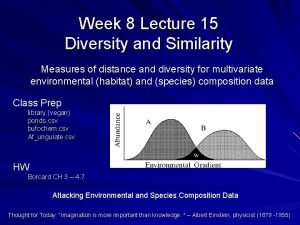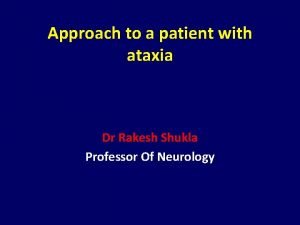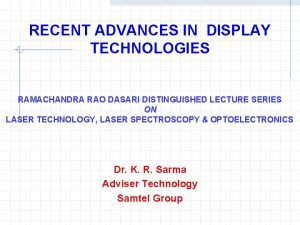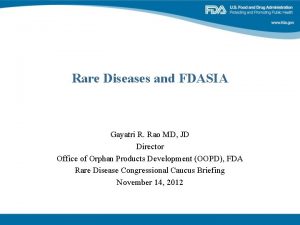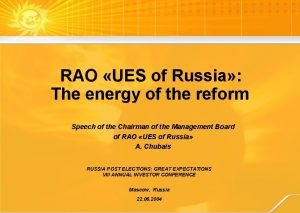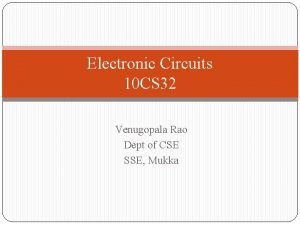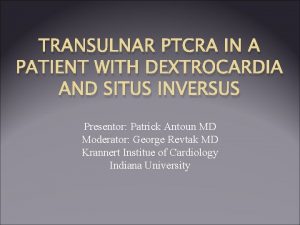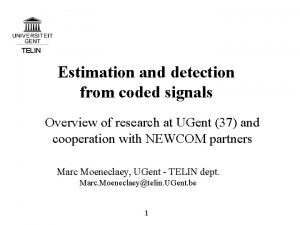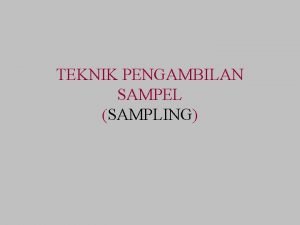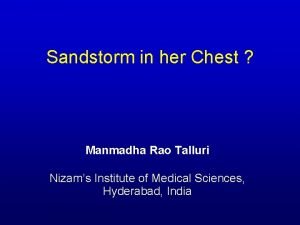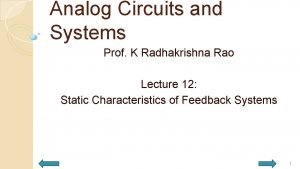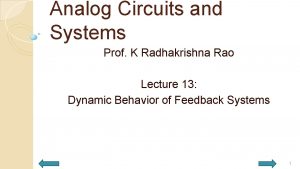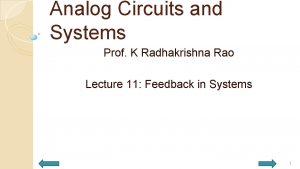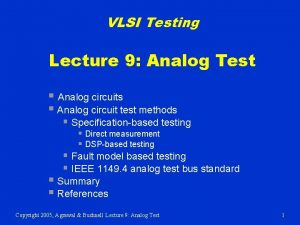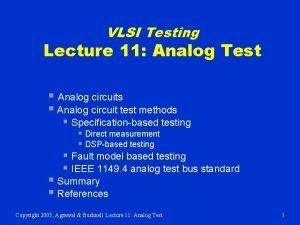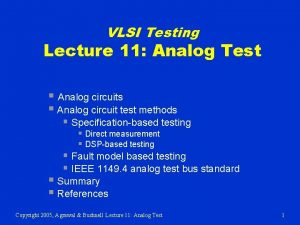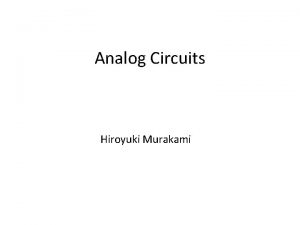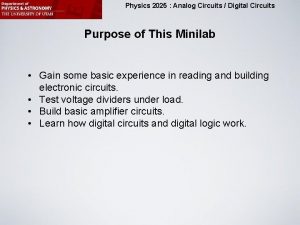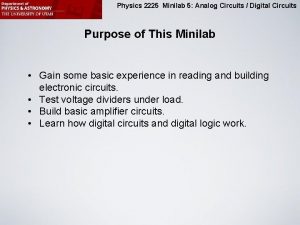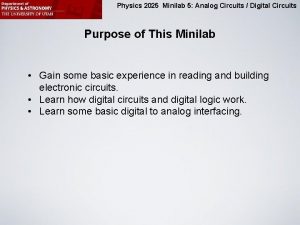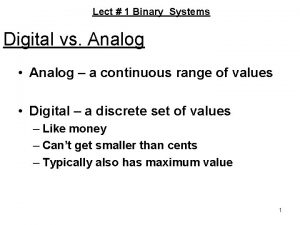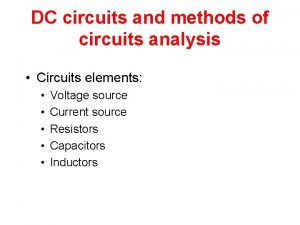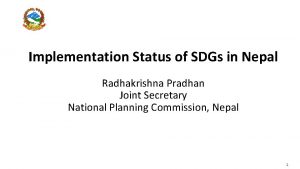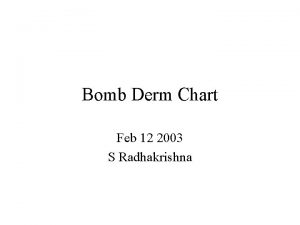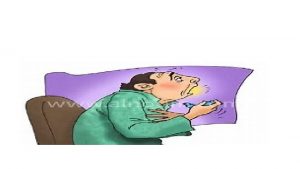Analog Circuits and Systems Prof K Radhakrishna Rao











































- Slides: 43

Analog Circuits and Systems Prof. K Radhakrishna Rao Lecture 14: Dynamic Behavior of Feedback Systems 1

Current Follower using MOSFET � Common-gate amplifier is valid within the active region of the n-channel enhancement MOSFET Active region: 0 to IDmax 2

Current Follower using MOSFET (Biasing) � If the dynamic range is to be maximized � the MOSFET has to be biased at quiescent current of 3

MOSFET Current Follower as First-Order System � If the gate-to-source capacitance is taken into consideration 4

MOSFET Current Follower as First-Order System (contd. , ) 5

Automatic Gain Controller (Dynamic Behavior) 6

Automatic Gain Controller (Dynamic Behavior) (contd. , ) � It is a dc voltage follower from Vi to the output of the squarer 7

Frequency Follower 8

Frequency Follower (contd. , ) 9

FSK Dynamics 10

Simulation 1 11

Simulation 2 12

Simulation 3 13

Second Order System 14

Second Order System (contd. , ) 15

Second Order System (contd. , ) 16

Second Order System (contd. , ) 17

Second Order System: Time Response � Input – output relationship in time domain of this second order feedback system is governed by 18

Second Order System: Time Response (contd. , ) 19

Second Order System: Time Response (contd. , ) 20

Simulation (Q=1) 21

Simulation (Q=10) 22

Second Order System: Time Response (contd. , ) 23

Step response of the second order system 24

Second Order System: Time Response (contd. , ) � If Q<1 the rate of rise is lower. � When Q>1 the rate of rise is higher but there will be more peaks and results in higher settling time. � There are ten visible peaks (count up to 0. 1 of the first peak) when Q = 10. � This can be generalized to say if Q = n, there will be n visible peaks in the transient response. � The most desirable step response of a feedback is obtained for a value of Q=1. � The response is characterized by good rate of rise with one small peak 25

Second Order System: Frequency Response 26

Second Order System: Frequency Response 27

Frequency response of the second order system � Frequency response of the second order system with feedback Q=1 28

Frequency response of the second order system (contd. , ) � Frequency response of the second order system with feedback Q = 10 29

Frequency response of the second order system (contd. , ) � When Gfmax=Gf 0 then the frequency response of the amplifier is said to be maximally flat. � This property can be exploited in the design of wide band amplifiers 30

FLL – as second order system 31

Frequency Follower 32

Example 1 33

Example 2 34

Approximation of a Second Order System � Second order feedback amplifiers can be approximated to a first order system when � Q is much less than 1/2 � Consider 35

Approximation of a Second Order System (contd. , ) � Gf is now a first order system with bandwidth 36

Approximation of a Second Order System (contd. , ) 37

Approximation of a Second Order System (contd. , ) 38

Approximation of a Second Order System (contd. , ) � As Q is much less than 1 the transient response of the amplifier is very sluggish and not satisfactory. � In order to increase Q to 1, f’ need to be shifted from 4 Hz to 400 Hz. This will increase GB to 39

Second order system with a zero Transfer function of the feedback system 40

Second order system with a zero (contd. , ) 41

Second order system with a zero (contd. , ) If wz is made equal to natural frequency of the second order system then Q = 1 Making Q = 1 is known as frequency compensation 42

Conclusion � Higher (third or higher) order systems are likely to become unstable when feedback is used. � Design of feedback systems should attempt to reduce the order of the system to second or first order. This is what we mean by frequency compensation of a feedback system � If of the subsystems of the feedback loop gets in saturation the feedback loop gets broken. Special arrangements may have to be made to bring the loop into active region. 43
 Telemedicn
Telemedicn Radhakrishna dasari
Radhakrishna dasari Advantages of parallel circuits over series circuit
Advantages of parallel circuits over series circuit S domain
S domain Introduction to digital control
Introduction to digital control 2057 octal to decimal
2057 octal to decimal Binary systems and logic circuits
Binary systems and logic circuits Transactions on circuits and systems
Transactions on circuits and systems Analog vs digital communication systems
Analog vs digital communication systems Compare and contrast analog and digital forecasting
Compare and contrast analog and digital forecasting Compare and contrast analog and digital forecasting
Compare and contrast analog and digital forecasting Vnr mtp
Vnr mtp Khắp trên trời truyền rao
Khắp trên trời truyền rao Rao blackwell particle filter
Rao blackwell particle filter G. v. k. rao committee
G. v. k. rao committee Stanford mips
Stanford mips Sumathi rao
Sumathi rao Rpo ribs
Rpo ribs Dr goutham rao
Dr goutham rao Nisha rao md
Nisha rao md Champagne cork appearance of optic disc
Champagne cork appearance of optic disc Michelle rao
Michelle rao Ramesh r. rao
Ramesh r. rao Cramer rao inequality
Cramer rao inequality Russell rao distance
Russell rao distance Amos rao
Amos rao Causes of cerebellar dysfunction
Causes of cerebellar dysfunction Turas e portfolio
Turas e portfolio Iv rao
Iv rao Oopd database
Oopd database Ues in russian
Ues in russian Pengertian sistem menurut rao met
Pengertian sistem menurut rao met Attilio rao
Attilio rao Rao
Rao S balachandra rao
S balachandra rao Dr anil rao
Dr anil rao Priti rao infosys
Priti rao infosys Sailesh rao cowspiracy
Sailesh rao cowspiracy Dr. m. venu gopala rao
Dr. m. venu gopala rao Dr. m. venu gopala rao
Dr. m. venu gopala rao Rao
Rao Linear modulation
Linear modulation Rumus slovin
Rumus slovin Dr. talluri. manmadha rao
Dr. talluri. manmadha rao

